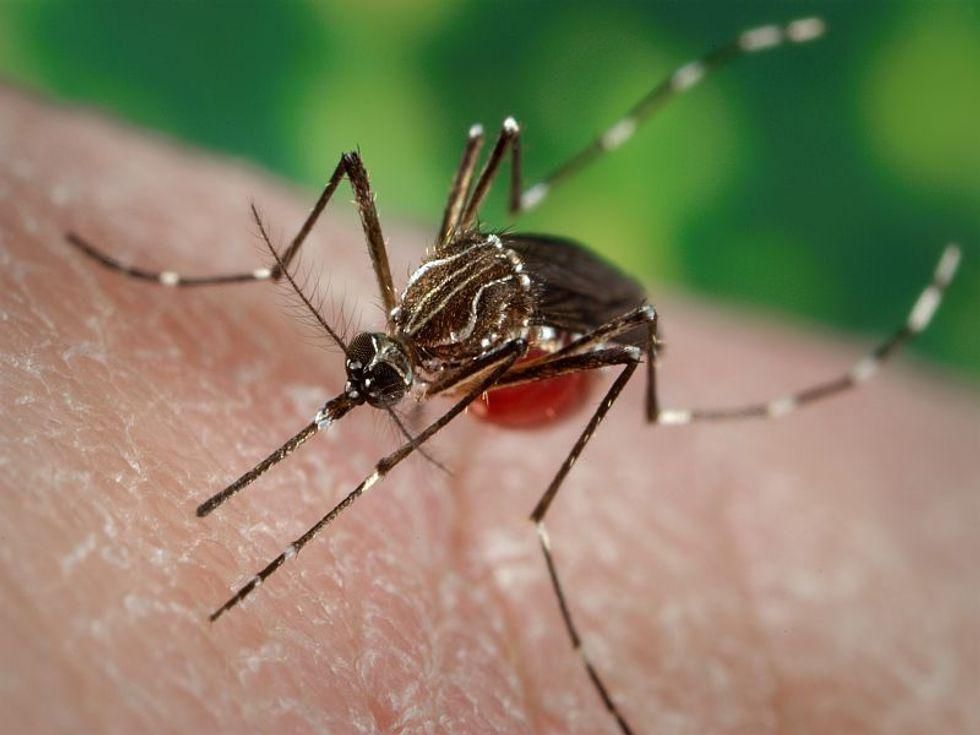
Just as a person might be drawn to a particular scent, so, too, are mosquitoes.
The pesky insects may be attracted to a chemical cocktail of odors emanating from the skin, according to a new study.
The draw is a combination of carbon dioxide plus two chemicals, 2-ketoglutaric and lactic acid, researchers said. The chemical cocktail not only causes a mosquito to locate and land on its victim, but it encourages probing to find blood.
The mixture appears to specifically attract female Aedes aegypti mosquitoes, a type that originated in Africa and is now in other tropical and subtropical regions, including the United States. These can be vectors of Zika, chikungunya, dengue and yellow fever viruses.
“Though others have identified compounds that attract mosquitoes, many of them don’t elicit a strong, rapid effect. This one does,” said study co-author Ring Cardé, a professor of entomology at the University of California, Riverside.
Skin odors appear to be the most important for mosquitoes when locating someone to bite, but other cues include sight, temperature and humidity.
“We demonstrated that mosquitoes land on visually indistinct targets imbued with these two odors, and these targets aren’t associated with heat or moisture,” Cardé said in a university news release. “That leaves skin odor as the key guiding factor.
“I suspected there was something undiscovered about the chemistry of odors luring the yellow fever mosquito. I wanted to nail down the exact blend,” he explained.
Other studies have pointed to carbon dioxide combined with ammonia, as well as lactic acid.
Typical methods would not have worked to identify 2-ketoglutaric acid, Cardé said.
“I think that these chemicals may not have been found before because of the complexity of the human odor profile and the minute amounts of these compounds present in sweat,” said co-author Jan Bello, formerly of UCR and now with the insect pest control company Provivi.
To get the study started, Bello filled his socks with glass beads and walked around with the beads in his socks for four hours, to collect sweat.
Bello was then able to isolate chemicals from the sweat deposited on the sock beads. Researchers then observed the mosquitoes’ response to those chemicals.
Future studies will work to determine whether the same compound draws other mosquitoes. They will also attempt to figure out why there is such variation in how likely individuals are to be bitten.
“Some are more attractive than others to these mosquitoes, but no one’s yet established why this is so,” Cardé said.
The team is hopeful their discovery can be used to attract, trap and potentially kill disease-spreading mosquitoes.
The findings were published Sept. 21 in the journal Scientific Reports.
More information
The U.S. Centers for Disease Control and Prevention has more on mosquito-borne disease.
SOURCE: University of California, Riverside, news release, Sept. 21, 2022
Source: HealthDay

Leave a Reply